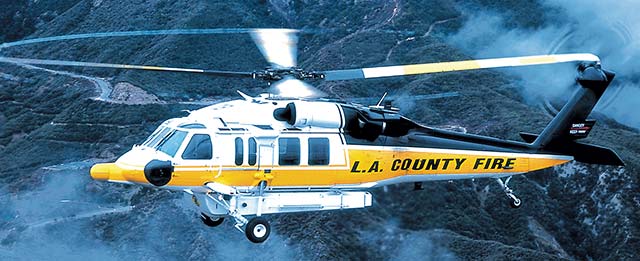Checking out the Capabilities of the Sikorsky S 70: An Extensive Review
Checking out the Capabilities of the Sikorsky S 70: An Extensive Review
Blog Article
Modernized Vertical Lift Platform With Advanced Composite Frameworks and Boosted Precaution
In the world of vertical lift platforms, a significant change in the direction of innovation has been observed, driven by the integration of sophisticated composite structures and increased safety and security measures. In discovering the convergence of modern technology and safety in modern lift platforms, a compelling story emerges, showcasing the capacity for transformative innovations that provide to the ever-evolving demands of industrial markets.
Advancement of Vertical Lift Systems

The advancement of vertical lift platforms can be mapped back to fundamental pulley systems and early elevator layouts. Over time, developments such as hydraulic systems, electrical motors, and advanced control mechanisms have actually greatly enhanced the performance and safety and security of these systems. Makers have also focused on boosting the stability, reach, and load-bearing capabilities of vertical lift systems to satisfy the varied needs of different industries.
Furthermore, the combination of wise modern technologies like sensors, IoT connectivity, and automation features has additionally transformed the capacities of contemporary vertical lift systems. These technological enhancements not only enhance operational productivity yet likewise ensure heightened safety standards for employees making use of these platforms at numerous heights. The constant evolution of vertical lift platforms highlights their crucial duty in enhancing vertical wheelchair across industries.
Combination of Advanced Compound Structures

Furthermore, the use of advanced composite materials permits for more complicated and enhanced structural styles, enabling designers to tailor the platform's homes to fulfill details efficiency needs. Generally, the consolidation of sophisticated composite frameworks in modern upright lift systems stands for a considerable improvement in aerospace modern technology, leading to much more effective, trusted, and safer aerial transport systems.
Boosted Precaution Execution
Implementing enhanced precaution is critical in ensuring the optimal efficiency and integrity of contemporary upright lift platforms. These procedures include a series of approaches intended at mitigating risks and boosting general safety and security standards. One key aspect of improved precaution is the assimilation of innovative sensor Find Out More technologies to keep an eye on various specifications in real-time. By using sensing units for features such as architectural wellness monitoring, load surveillance, and ecological noticing, potential risks can be determined early, enabling positive maintenance and restorative activities.

Industry Applications and Advantages
With innovations in innovation and engineering, updated vertical lift systems have located diverse applications throughout various sectors, providing significant advantages in effectiveness and performance. In the production industry, these platforms streamline the procedure of transporting hefty materials and tools within facilities, lowering hand-operated handling and enhancing operational performance. The construction market benefits from upright lift systems by allowing employees to gain access to elevated locations securely and effectively, boosting overall project timelines. Warehousing and logistics firms utilize these systems to maximize storage room usage and help with quicker selecting and packaging procedures.
In addition, vertical lift platforms play a critical duty in the repair and maintenance of infrastructure such as bridges, power lines, and buildings, enabling professionals to get to unattainable areas effortlessly (sikorsky s 70). The air travel market likewise leverages these systems for airplane upkeep and setting up tasks, improving process efficiency and ensuring employee safety at heights. On the whole, the extensive fostering of up-to-date vertical lift systems throughout sectors emphasizes their adaptability and the substantial published here improvements they offer different procedures
Future Trends in Lift Platform Innovation
Incorporating sophisticated automation and smart features, lift platform innovation is poised to transform vertical transportation systems in the close to future. One crucial pattern is the integration of Net of Things (IoT) innovation, allowing lift systems to communicate real-time data for predictive maintenance, enhancing performance, and boosting security. click over here As lift system technology continues to progress, these fads are set to shape the future of vertical transportation, making it a lot more effective, risk-free, and straightforward.
Conclusion
In verdict, the up-to-date vertical lift platform showcases the evolution of technology in the sector. By incorporating sophisticated composite structures and boosted precaution, this system provides boosted effectiveness and safety and security for numerous applications. The industry can profit substantially from these advancements, and future trends in lift platform modern technology are most likely to continue surpassing these innovations for also better success and performance.
In the world of upright lift platforms, a considerable change towards innovation has actually been observed, driven by the assimilation of advanced composite frameworks and heightened safety steps. The continuous advancement of vertical lift platforms emphasizes their important role in improving upright wheelchair throughout industries.

The consolidation of advanced composite structures in contemporary vertical lift systems has actually significantly boosted their architectural honesty and efficiency abilities. By incorporating these innovative composites into the design and construction of upright lift platforms, makers can minimize total weight, increase load-carrying capability, and boost the platform's resilience and longevity.
Executing enhanced safety and security measures is essential in making sure the optimal efficiency and reliability of modern-day upright lift platforms.
Report this page